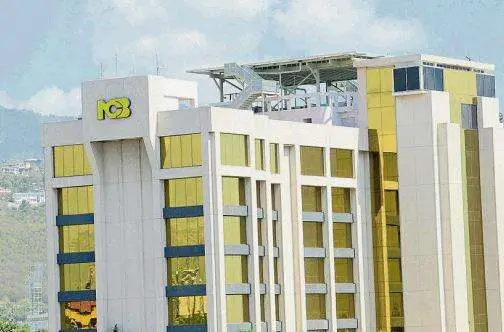
NCB focuses on internal efficiencies
Jamaican commercial banking giant, National Commercial Bank (NCB) will now focus on implementing internal efficiencies while considering acquisitions and other opportunities as they arise.
Speaking at a breakfast media briefing at the Courtleigh Hotel in New Kingston last Wednesday, NCB’s group managing director Patrick Hylton said that back in 2002, NCB had 20 per cent of the local banking market- today it now holds 40 per cent.
During that period it aggressively sought to grow market share with a number of innovative products and services. It took a customer-centric approach that saw it surpass Scotiabank and claim the mantle as Jamaica’s best performing and profitable bank back in 2010.
The recent debt-exchange programmes have served to slow down its growth but it has compensated for that by growing its loan book and increasingly looking to the productive sector.
Both Patrick Hylton and Dennis Cohen (deputy managing director) have effectively diversified the Group’s income streams into seven respective divisions which are: Retail & SME, Treasury, NCB Capital Markets, NCB Insurance, Corporate Banking, Payment Services and Advantage General Insurance Company Limited (AGIC). This has in no short measure, helped to mitigate against the contraction in the economy and the loss of revenue derived from government paper.
For the year ended 2013, NCB posted net profit of $8.5 billion, a decrease of 14.9 per cent, or $1.5 billion when compared with the year ended September 30, 2012; this being as a result of one-off impacts from national debt exchange, private debt exchange, IPO related expenses and staff redundancy costs. Operating income however, increased by 9.9 per cent, or $3.4 billion, when compared with the same period, as did the Group’s net loan portfolio, which grew by 26.1 per cent, or $29.2 billion.
The local banking sector has had to face the ire of both the public and the media for increasing the cost of fees and charges as it attempts to make up for the hit taken from the debt exchanges.
Hylton succinctly explained the rationale behind the increases pointing to security, administrative, financial and energy prices as input costs in holding and securing money which generally was not passed unto customers because of the large spreads made in times passed. Banking is like any other business and has to adapt to prevailing conditions in order to return shareholder value.
Hylton is an astute, articulate and intelligent banker who does not subscribe to verbosity. However he cannot be the only banker to address the public’s concerns.
There are many marketing and communication “specialists” employed to the banks on good salaries that must get out there and explain the present paradigm in a manner that Jamaicans will be satisfied with.
Also the Jamaica Bankers Association (JBA) cannot remain mute on this subject, neither should the other leading banking houses.
Hylton went on to say that the banking sector is highly regulated and has to regularly report on tax compliance, its source of income, banking practices and must answer to the Bank of Jamaica and Financial Services Commission (FSC) not to mention account to its shareholders. It is unarguably the most regulated sector in the economy where transparency is a watchword.
The impression that banks simply want to extract as much money as they can from financially challenged Jamaicans with the approach of a shylock should not become part of the public consciousness. Hylton drew attention to the fact that many international banks garner more revenue from fees and charges than NCB does but it has not resulted in the furore that presently presides in Jamaica.
NCB has done well in Jamaica, For year-end, NCB had 17.7 per cent growth in assets driven by growth in its loan portfolio with year-over-year stockholders’ equity growth of 9.2 per cent. Capital adequacy for NCBJ of 12.6 per cent; capital to risk weighted assets ratio (risk assessed assets as a percentage of qualifying capital) for NCB Capital Markets Limited of 20.9 per cent; solvency ratio for NCBIC of 36.3 per cent; and, Minimum Capital Test (MCT) for AGIC of 251.7 per cent
Asset and equity growth continues to be the highest in the market. So wouldn’t NCB fare better in markets with a higher income per capita and better economies.Is it not time that NCB make a serious foray into the Caribbean?
Hylton said that it is a prospect that remains on its agenda but cautioned that the opportunities have to be thoroughly calculated and assessed.
NCB is looking to transform its business model and this can be seen in its efforts to retrofit its branches with a ‘Bank on the Go’ convenience approach with 24-hour banking utilising state-of-the art technology. It has been well received by the public. This is in keeping with its mandate to strengthen internal efficiencies.

























